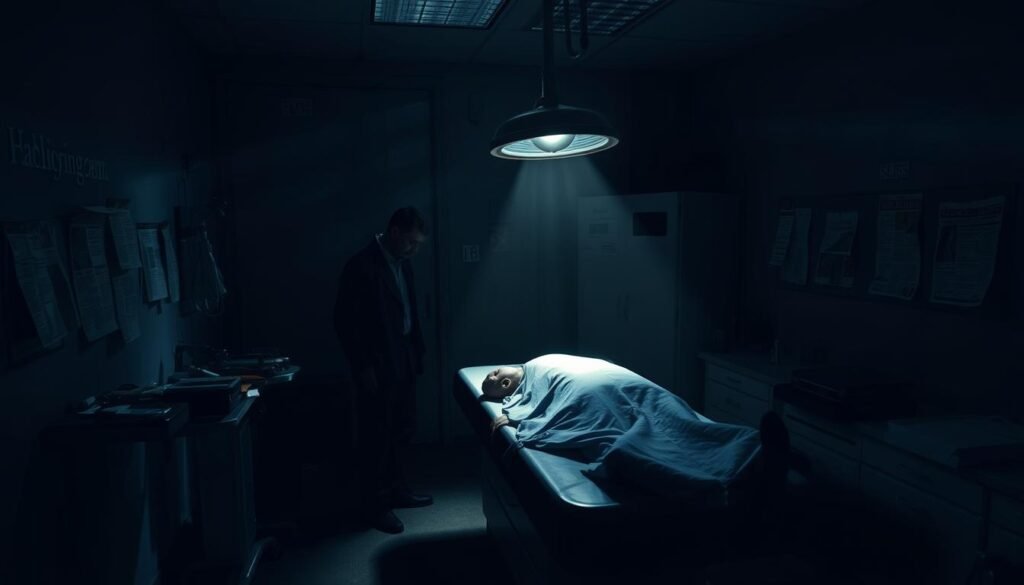The sudden loss of Julio Foolio has prompted many to talk about his legacy. His work showed the real side of street life with honesty. Foolio’s autopsy results remind us of the tough issues young artists face. The autopsy report of Foolio reveals important details. It makes us think about the artist’s life and bigger problems like mental health and violence in hip-hop. The findings from the foolio autopsy investigation highlight how crucial it is to stay strong and tell your story. It urges fans to connect with his music more deeply.
Key Takeaways
- Julio Foolio was born on January 21, 1998, in Jacksonville, Florida, and actively contributed to music from 2017 until his death.
- His music resonates through tracks like “Came Back,” “Skit,” and “Dead Opps,” reflecting the realities of street life.
- The foolio autopsy results provide essential insights into the circumstances surrounding his death.
- Speculation about the autopsy findings highlights the urgent need to address artists’ mental health issues.
- Foolio’s legacy raises awareness about the pressures faced by young hip-hop artists in today’s industry.
Who Was Julio Foolio?
Julio Foolio, also known as Charles Jones, was born on January 21, 1998, in Jacksonville, Florida. He quickly became an important figure in the Florida hip-hop scene. His music reflects his life struggles, especially those related to street life.
Julio Foolio’s story is full of challenges, from his early life to dealing with gang violence. These experiences deeply influenced his music and connection with fans.
Background and Early Life
Julio Foolio grew up in tough conditions in Jacksonville. The world around him shaped his music. It provided stories for his songs.
He used music to deal with his troubles. Through his lyrics, he opened up about his life and issues in society.
Musical Career and Style
Julio Foolio started getting noticed in the music world around 2017. His unique style stands out for its honest storytelling. Songs like “Came Back” and “Dead Opps” show his ability to express deep feelings about violence and loss.
He has made a big impact on Florida hip-hop. Fans appreciate how he talks about real, hard experiences in his music. This has made him a vital voice in the music scene.
What Led to the Speculation About Julio Foolio’s Autopsy?
Julio Foolio’s sudden death shocked fans and the music world. Many couldn’t believe the young artist was gone at 26. Social media filled with sad messages from his followers. His death circumstances, including an attack in Tampa during his birthday celebration, sparked a lot of speculation.
Sudden Death and Initial Reactions
Julio Foolio’s death brought a huge response from the media. His family, especially his mother Sandrikas Mays, was overwhelmed with questions. A video released by Foolio claiming, “I’ll Never Die I’m a DemiGod,” made fans doubt his death. Some said they’d only believe it when they saw a funeral. It was reported that Foolio was shot in an ambush outside a hotel, causing rumors and theories to spread.
Media and Fan Speculation
The media and fans intensely speculated about Julio Foolio’s death. The arrest of three suspects, Isaiah Chance, Alicia Andrews, and Sean Gathright, added to the speculation. Fans thought his murder could be gang-related due to Foolio’s past and industry rivalries. Online discussions ranged from disbelief to a weird hope that he might come back to life. This was after videos surfaced online after his death was announced.

Foolio Autopsy Findings and Analysis
The results of Foolio’s autopsy reveal much about the sad events leading to the rapper’s early death. The examination details how he died, clearing up questions that arose afterward.
Summary of the Autopsy Report
The report from Foolio’s autopsy shows he died from a shooting at a Tampa hotel. It tells us that gunshots were the cause, offering insight into his final moments. It also mentions three others hurt in the incident, highlighting the event’s chaos.
Critical Insights from the Findings
Foolio’s autopsy analysis sheds light on not just medical facts but also on safety in the music world. It sparks important discussions on the dangers artists face, especially with violence around. His music impacts many, but his story is a reminder of how fragile life can be for artists.
Impact of Foolio’s Autopsy Results on His Legacy
The autopsy results of Julio Foolio have a huge impact on his legacy. Fans explore his music, finding new meaning in his words. His struggles, shared through his songs, are now seen in a deeper light. This makes us see his life and music differently, adding depth to his legacy.
Shifting Narratives in His Music
His music, including “Catch Me In Traffic” and “When I See You,” gains new layers. Fans and critics see more in his words—they reflect personal and broader struggles. These deeper discussions bring attention to issues like addiction and mental health.
These conversations around his music and the autopsy results call for more support. Artists facing similar issues need better resources and understanding.
Reflection of His Life and Struggles
After his death, people gathered to remember Julio Foolio’s battles. These events show our collective sadness and stress the importance of empathy. They push us to support mental health and artist challenges more.
Talking about Foolio’s life and legacy can inspire change. It shows how telling his story can lead to a kinder approach to mental health in the music world.
